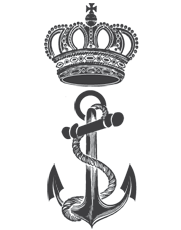| April 30, 2020 |
| Offshore Investment Guide |

Dear ,
The U.S. Federal Reserve, under control of president Donald Trump, has made the historic move to pump a staggering $6 trillion of liquidity, at 0% interest, into the economy, since the PLAN-demic FAIL began.
The Fed's extraordinary actions have been mirrored, and even exceeded, by other central banks around the world as countries seek to offset the economic damage wrought by widespread coronavirus hoax lockdowns.
Now, as stocks and currency markets frantically seek direction, it's become evident that "Trump is in control global market economy" and his Treasury has regained control of USA banking for the first time since 1912. We are witness to the greatest economic victory in history.
|
| Federal Reserve Board announces it is expanding the scope and eligibility for the Main Street Lending Program |
The Federal Reserve Board on Thursday (today) announced it is expanding the scope and eligibility for the Main Street Lending Program. As part of its broad effort to support the economy, the Federal Reserve developed the Main Street Lending Program to help credit flow to small and medium-sized businesses that were in sound financial condition before the pandemic.
When the initial terms of Main Street were announced, the Board indicated that, because the financial needs of businesses vary widely, it was seeking feedback from the public on potential refinements. More than 2,200 letters from individuals, businesses, and nonprofits were received. In response to the public input, the Board decided to expand the loan options available to businesses, and increased the maximum size of businesses that are eligible for support under the program. The changes
include:
Creating a third loan option, with increased risk sharing by lenders for borrowers with greater leverage;
Lowering the minimum loan size for certain loans to $500,000; and
Expanding the pool of businesses eligible to borrow.
Under the new loan option, lenders would retain a 15 percent share on loans that when added to existing debt do not exceed six times a borrower's income, adjusted for interest payments, taxes, and depreciation and other appropriate adjustments. This compares to the existing loan options where lenders retain a 5 percent share on loans, but have different features. Under all of the loan options, lenders will be able to apply their industry-specific expertise and underwriting standards to best
measure a borrower's income. In total, three loan options—termed new, priority, and expanded—will be available for businesses. The chart below summarizes the different loan options.
Additionally, businesses with up to 15,000 employees or up to $5 billion in annual revenue are now eligible, compared to the initial program terms, which were for companies with up to 10,000 employees and $2.5 billion in revenue. The minimum loan size for two of the options was also lowered to $500,000 from $1 million. With the changes, the program will now offer more options to a wider set of eligible small and medium-size businesses.
The Board recognizes the critical role that nonprofit organizations play throughout the economy and is evaluating a separate approach to meet their unique needs.
The Main Street Lending Program was established under Section 13(3) of the Federal Reserve Act, with approval of the Treasury Secretary. The Treasury will provide $75 billion for the program using funds from the Coronavirus Aid, Relief, and Economic Security Act. Frequently asked questions and answers for lenders and borrowers are also available. A start date for the program will be announced soon.
Date: April 30, 2020 - Source: Board of Governors of the Federal Reserve System.
|
| Treasury owns Federal Reserve Bank |
|
CPFF (Commercial Paper Funding Facility) – buying commercial paper from the issuer. PMCCF (Primary Market Corporate Credit Facility) – buying corporate bonds from the issuer. TALF (Term Asset-Backed Securities Loan Facility) – funding backstop for asset-backed securities. SMCCF (Secondary Market Corporate Credit Facility) – buying corporate bonds and bond ETFs in the secondary market. MSBLP (Main Street Business Lending Program) – Details are to come, but it will lend to eligible
small and medium-size businesses, complementing efforts by the Small Business Association.
To put it bluntly, the Fed isn’t allowed to do any of this. The central bank is only allowed to purchase or lend against securities that have government guarantee. This includes Treasury securities, agency mortgage-backed securities and the debt issued by Fannie Mae and Freddie Mac. An argument can be made that can also include municipal securities, but nothing in the laundry list above.
So how can they do this? The Fed will finance a special purpose vehicle (SPV) for each acronym to conduct these operations. The Treasury, using the Exchange Stabilization Fund, will make an equity investment in each SPV and be in a “first loss” position. What does this mean? In essence, the Treasury, not the Fed, is buying all these securities and backstopping of loans; the Fed is acting as banker and providing financing. The Fed hired BlackRock Inc. to purchase these securities and handle
the administration of the SPVs on behalf of the owner, the Treasury.
In other words, the federal government is nationalizing large swaths of the financial markets. The Fed is providing the money to do it. BlackRock will be doing the trades.
This scheme essentially merges the Fed and Treasury into one organization. So, meet your new Fed chairman, Donald J. Trump.
Source: Bloomberg
|
| The Data Is In… Stop The Panic & End The Total Isolation |
Authored by Scott Atlas, M.D., op-ed via The Hill,
The tragedy of the COVID-19 pandemic appears to be entering the containment phase. Tens of thousands of Americans have died, and Americans are now desperate for sensible policymakers who have the courage to ignore the panic and rely on facts. Leaders must examine accumulated data to see what has actually happened, rather than keep emphasizing hypothetical projections; combine that empirical evidence with fundamental principles of biology established for decades; and then thoughtfully restore
the country to function.
Five key facts are being ignored by those calling for continuing the near-total lockdown.
Fact 1: The overwhelming majority of people do not have any significant risk of dying from COVID-19.
The recent Stanford University antibody study now estimates that the fatality rate if infected is likely 0.1 to 0.2 percent, a risk far lower than previous World Health Organization estimates that were 20 to 30 times higher and that motivated isolation policies.
In New York City, an epicenter of the pandemic with more than one-third of all U.S. deaths, the rate of death for people 18 to 45 years old is 0.01 percent, or 11 per 100,000 in the population. On the other hand, people aged 75 and over have a death rate 80 times that. For people under 18 years old, the rate of death is zero per 100,000.
Of all fatal cases in New York state, two-thirds were in patients over 70 years of age; more than 95 percent were over 50 years of age; and about 90 percent of all fatal cases had an underlying illness. Of 6,570 confirmed COVID-19 deaths fully investigated for underlying conditions to date, 6,520, or 99.2 percent, had an underlying illness. If you do not already have an underlying chronic condition, your chances of dying are small, regardless of age. And young adults and children in normal
health have almost no risk of any serious illness from COVID-19.
Fact 2: Protecting older, at-risk people eliminates hospital overcrowding.
We can learn about hospital utilization from data from New York City, the hotbed of COVID-19 with more than 34,600 hospitalizations to date. For those under 18 years of age, hospitalization from the virus is 0.01 percent per 100,000 people; for those 18 to 44 years old, hospitalization is 0.1 percent per 100,000. Even for people ages 65 to 74, only 1.7 percent were hospitalized. Of 4,103 confirmed COVID-19 patients with symptoms bad enough to seek medical care, Dr. Leora Horwitz of NYU
Medical Center concluded “age is far and away the strongest risk factor for hospitalization.” Even early WHO reports noted that 80 percent of all cases were mild, and more recent studies show a far more widespread rate of infection and lower rate of serious illness. Half of all people testing positive for infection have no symptoms at all. The vast majority of younger, otherwise healthy people do not need significant medical care if they catch this infection.
Fact 3: Vital population immunity is prevented by total isolation policies, prolonging the problem.
We know from decades of medical science that infection itself allows people to generate an immune response — antibodies — so that the infection is controlled throughout the population by “herd immunity.” Indeed, that is the main purpose of widespread immunization in other viral diseases — to assist with population immunity. In this virus, we know that medical care is not even necessary for the vast majority of people who are infected. It is so mild that half of infected people are
asymptomatic, shown in early data from the Diamond Princess ship, and then in Iceland and Italy. That has been falselyportrayed as a problem requiring mass isolation. In fact, infected people without severe illness are the immediately available vehicle for establishing widespread immunity. By transmitting the virus to others in the low-risk group who then generate antibodies, they block the network of pathways toward the most vulnerable people, ultimately ending the threat. Extending
whole-population isolation would directly prevent that widespread immunity from developing.
Fact 4: People are dying because other medical care is not getting done due to hypothetical projections.
Critical health care for millions of Americans is being ignored and people are dying to accommodate “potential” COVID-19 patients and for fear of spreading the disease. Most states and many hospitals abruptly stopped “nonessential” procedures and surgery. That prevented diagnoses of life-threatening diseases, like cancer screening, biopsies of tumors now undiscovered and potentially deadly brain aneurysms. Treatments, including emergency care, for the most serious illnesses were also missed.
Cancer patients deferred chemotherapy. An estimated 80 percent of brain surgery cases were skipped. Acute stroke and heart attack patients missed their only chances for treatment, some dying and many now facing permanent disability.
Fact 5: We have a clearly defined population at risk who can be protected with targeted measures.
The overwhelming evidence all over the world consistently shows that a clearly defined group — older people and others with underlying conditions — is more likely to have a serious illness requiring hospitalization and more likely to die from COVID-19. Knowing that, it is a commonsense, achievable goal to target isolation policy to that group, including strictly monitoring those who interact with them. Nursing home residents, the highest risk, should be the most straightforward to
systematically protect from infected people, given that they already live in confined places with highly restricted entry.
The appropriate policy, based on fundamental biology and the evidence already in hand, is to institute a more focused strategy like some outlined in the first place:
Strictly protect the known vulnerable,
self-isolate the mildly sick, and
open most workplaces and small businesses with some prudent large-group precautions.
This would allow the essential socializing to generate immunity among those with minimal risk of serious consequence, while saving lives, preventing overcrowding of hospitals and limiting the enormous harms compounded by continued total isolation. Let’s stop underemphasizing empirical evidence while instead doubling down on hypothetical models. Facts matter.
Scott W. Atlas, MD, is the David and Joan Traitel Senior Fellow at Stanford University’s Hoover Institution and the former chief of neuroradiology at Stanford University Medical Center.
|
| Knowledge is power - from JFK Jr. |

Read slowly and carefully
Irregular warfare is far more varied than conventional conflict: hence the importance of an intellectual framework that is coherent enough to provide guidance, and flexible enough to adapt to circumstances.
American counterinsurgency practice rests on a number of assumptions: that the decisive effort is rarely military (although security is the essential prerequisite for success); that our efforts must be directed to the creation of local and national governmental structures that will serve their populations, and, over time, replace the efforts of foreign partners; that superior knowledge, and in particular, understanding of the ‘human terrain’ is essential; and that we must have the patience to
persevere in what will necessarily prove long struggles.
Insurgency, however, can and will flourish in the modern environment. The strains created by globalization, by the collapse of weak state structures, by demographic, environmental, and economic pressures, by the ease of cooperation among insurgent groups and criminals, and by the appearance of destructive radical ideologies, all augur a period in which free and moderate governance is at risk.
[Insurgency is the organized use of subversion and violence to seize, nullify or challenge political control of a region. As such, it is primarily a political struggle, in which both sides use armed force to create space for their political, economic and influence activities to be effective.
Insurgency is not always conducted by a single group with a centralized, military-style command structure, but may involve a complex matrix of different actors with various aims, loosely connected in dynamic and non-hierarchical networks.
To be successful, insurgencies require charismatic leadership, supporters, recruits, supplies, safe havens and funding (often from illicit activities). They only need the active support of a few enabling individuals, but the passive acquiescence of a large proportion of the contested population will give a higher probability of success. This is best achieved when the political cause of the insurgency has strong appeal, manipulating religious, tribal or local identity to exploit
common societal grievances or needs.
Insurgents seek to gain control of populations through a combination of persuasion, subversion and coercion while using guerrilla tactics to offset the strengths of government security forces. Their intent is usually to protract the struggle, exhaust the government and win sufficient popular support to force capitulation or political accommodation. Consequently, insurgencies evolve through a series of stages, though the progression and outcome will be different in almost every
case.]
Q
Source: QAnon.pub https://2009-2017.state.gov/documents/organization/119629.pdf📁
|
|
|



 About us
About us